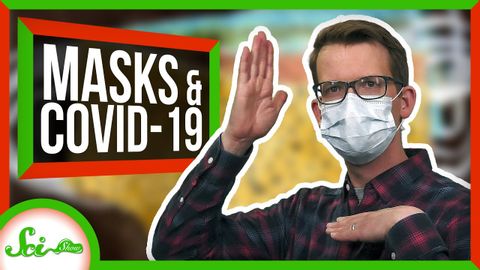為什麼會有新的面膜推薦?| 科學秀新聞 (Why the New Face Mask Recommendations? | SciShow News)
 沒有此條件下的單字
沒有此條件下的單字US /ˈɛpɪˌsod/
・
UK /'epɪsəʊd/
- n.插曲;集;(電視或廣播節目的)一集;事件;一段時期;(疾病的)發作
US /səˈfɪstɪˌketɪd/
・
UK /səˈfɪstɪkeɪtɪd/
- adj.老於世故的;精緻的:富有經驗的
- v.t.老於世故的人
- v.t./i.出現;估計;我認為〜;認為
- n.身影;(計算過的)數量;肖像;圖;形狀;人物;名人;人影;數字
US /ˌrɛkəˈmɛnd/
・
UK /ˌrekə'mend/

